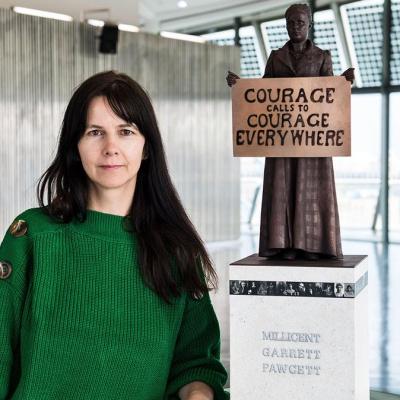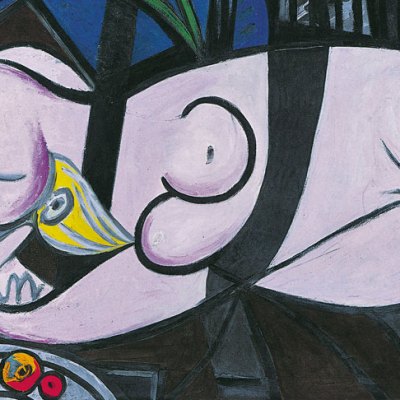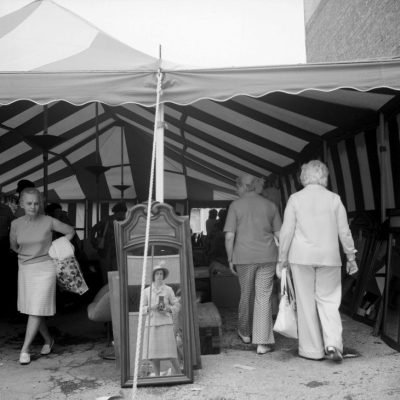The art collector and dealer Eugene Thaw has died at the age of 90. Thaw was one of the leading dealers of his generation, setting up a gallery in New York in the early 1950s that soon became renowned for old and modern masters and which would continue to flourish for more than 40 years. In the same decade, Thaw began to acquire drawings, gradually amassing an exceptional collection that, from the 1970s, he began to donate to the Morgan Library and Museum in New York (‘Drawn to Greatness: Master Drawings from the Thaw Collection’ closed there on 7 January). In 2008, when he was named Apollo Personality of the Year, Thaw spoke to Louise Nicholson about his unique relationship with the institution, and about his longstanding passion for drawings. Extracts from that interview are republished below.
‘I don’t give interviews. I’m a remote personality. I’m not easily accessible’, says Eugene Thaw, sitting straight-backed on a chair in his book-lined living room, legs crossed, dressed in tidy tweed jacket and brown trousers, high-altitude sun burning down outside. The previous day was his 81st birthday. 21 years ago he forsook New York to make his home in the desert lands of Santa Fe in New Mexico [Thaw and his late wife, Clare, would move back to Cherry Valley, New York, in 2012]. Back in the city where he attended Columbia University, then rose to be a notable dealer in drawings and paintings, a major collector and connoisseur, and an extraordinary philanthropist to the arts, he has been described in art circles as ‘like the Wizard of Oz, a legendary person we never see.’
Since the late 1960s, Mr Thaw has quietly built up a relationship with the Morgan Library that began with gifts of his drawings by first Watteau and then Fragonard. The drip-feed gifting soon took on its own energy and pace. He systematically enriched the 19th-century holdings, and began the 20th-century collection. Four exhibitions of his drawings have been held. Most of the exhibits have gone into the collection: with other gifts, he has given several hundred – even the Library is a little vague about the precise number.
Mr Thaw’s commitment to the Morgan has not been restricted to drawings. When in 1988 it wanted to buy Morgan’s brownstone house next to the original library building, he helped. ‘I gave a substantial sum and a drawing by Mantegna. So they put me on the board’, he grins, eyes twinkling through his large, square-lens spectacles. Then, as part of the Library’s make-over and expansion by Renzo Piano, completed in 2006, he gave the exquisite renaissance-inspired cube-shaped Clare Eddy Thaw Gallery, named for his wife. He has now given, with an endowment, the Library’s Thaw Conservation Center, a cutting-edge concept that marries up top-quality paper conservation with research, training and teaching, all core interests for Mr Thaw. The Morgan will also receive ‘all they want’ of his extensive art library. […]
[The relationship between Thaw and the Morgan] is ideally symbiotic. ‘His taste and ours are similar’, says [then curator of prints and drawings, Cara Denison ]. ‘Gene is a passionate collector. He has superb taste and a real feeling, he’s terribly emotional about it, feels it very deeply when he buys something. You don’t see that very much in a collector nowadays.’ […]
In his 1997 collection of essays, Reflections of an Independent Mind, Mr Thaw considers the true collector: ‘Collecting, in short, is an intellectual activity in the course of which one makes deliberate choices. […] Collecting is not only a matter of imposing order on groups of related things. It is also an attempt to arrive at a deeper understanding of them.’ He also acknowledges the thrill of the chase: ‘This is not to deny that there is an emotional or obsessional or manic element in some bouts of collecting, especially when competition is keen and the amounts of money at stake are large.’ […]
The collector, surely deeply rooted, did not emerge until Mr Thaw’s dealing became successful. ‘As a boy, I collected coins but in a desultory way. Once I started having a little bit of success and things were passing through my hands, my wife said “why don’t we keep some?” And drawings were what we could afford.’ He also began to keep things he could not sell ‘because I thought they were great. Museums are often not quick enough, and people are too slow or stupid. So I have some of the best of their kind.’ This is how he acquired Fragonard’s celebrated portrait of a girl in Naples. ‘It came to me from a New York collector. I offered it to the National Gallery and the Met. Finally I decided to keep it. It is one of the great masterpieces.’ […]
On another occasion he stretched to buy his first Rembrandt. ‘There were a couple of German dealers, A. and R. Ball, who had a suite behind MoMA, in the Dorset Hotel. One day I went there. They had a whole boxful of drawings from the Friedrich August of Saxony collection, his stamp was in the corner of every drawing. I bought a little Rembrandt. I bought it for $3,000. They let me pay it off at $300 a month for 10 months. It was the early sixties, I suppose.’ […]
Mr Thaw learnt from the Morgan Library’s collection. ‘Their exhibitions were exemplary, their catalogues well done.’ He smiles wryly as he recounts his first attempt to give them a drawing, in the 1960s: ‘It was a Jacques Callot, they turned it down, saying “we don’t take gifts from dealers”.’ Later, once on the board, he could make his own contributions as connoisseur. […]
William M. Griswold, [then] Director of the Morgan Library, has known Thaw for many years. ‘At the Morgan he has had a truly transformative effect. He’s committed not just to the collection but to scholars, students and the general public. His gifts have changed the tenor of the collection. He’s a born collector and, importantly, a born dealer. He’s passionate about art, passionate about philanthropy. He’s inspirational. And he concludes: ‘He’s been a godsend to the arts.’


